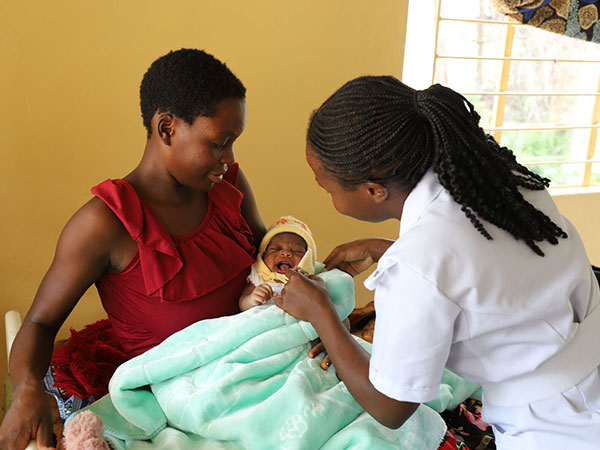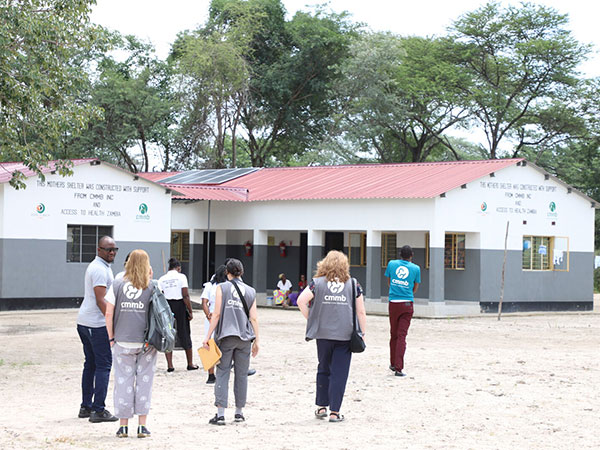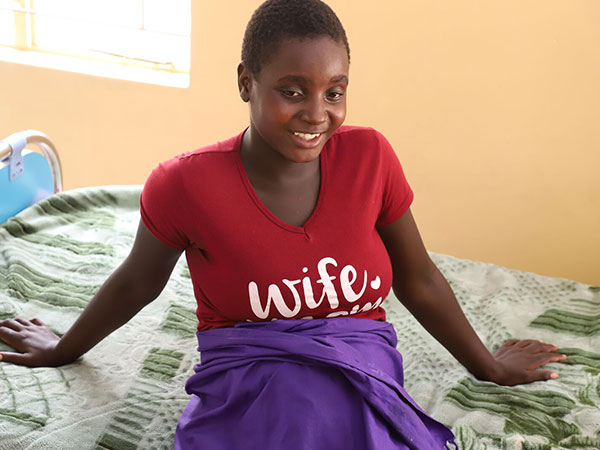New Mothers’ Shelter Supports Safer Childbirth in Zambia

In rural Zambia, by the time a woman feels the first pangs of labor, it is often too late for her to get to a hospital. Health facilities are scarce, with few ambulances available, and many families lack reliable transportation options. Walking to reach care, perhaps 40 miles away, is practically impossible. Even with a vehicle, the journey is challenging. Roads are often constructed of patchwork paving, if they are paved at all, creating a bumpy journey that is uncomfortable for any traveler—and excruciating for a woman in labor. For many expectant mothers, the only choice left is a risky one: giving birth at home.
Without professional care, a complicated delivery can quickly turn tragic. All too often, pregnant women in rural Zambia do not have access to any prenatal care, so they are unaware of risks that may arise at delivery, like a baby who hasn’t turned head down. In Zambia, the maternal mortality rate is a devastating 85 deaths per 100,000 live births. Just as unacceptable, the neonatal mortality rate is 24 deaths per 1,000 live births.
With better access to health solutions, more women and babies will survive childbirth. In September 2024, CMMB constructed a mothers’ shelter in Mwandi, a rural town in Zambia’s Western Province. The new shelter gives expectant mothers a safe place to stay, close to professional medical care, before labor begins—a truly lifesaving addition to this remote region of Zambia.
The Role of a Mothers’ Shelter
Located next to the Sankolonga Rural Health Post, CMMB’s new mothers’ shelter is a small building surrounded by sandy ground. It consists of two sections, one for women waiting to give birth, the other for mothers and newborns who are recovering. It’s a clean, calm space, with bathrooms, a designated space for cooking, and easy access to a water harvesting station at the health post next door.
Women arrive at the shelter about a month before their due date, bringing with them food and cookware. Often, they also come with small children and a family member to help. Visitors to the shelter pass through heavy brush, swampy terrain, and the occasional cluster of makeshift homes or a schoolhouse.
For many, the trip to the shelter is a long journey, sometimes taken by foot or oxcart. For the women who come here, the destination is well worth the journey. In Mwandi, and at other CMMB-constructed mothers’ shelters in Masese, Mushukula, and Sekasize, expectant mothers find a safe, supportive environment where they can receive prenatal care in the final weeks of their pregnancy. As their due dates approach, they know that skilled healthcare providers are close at hand.
Mbwawa’s Story
Mbwawa, a 21-year-old mother of a two-year-old, knows what it’s like to worry about enduring childbirth without skilled support. “We used to suffer,” she told us. “We never used to have a shelter where we could be waiting for delivery.”
Things are different now for Mbwawa and the women in her community. When she was eight months pregnant with her second child, Mbwawa started to feel contractions. Together with her sister-in-law, she made the four-hour journey to the Sankolonga Mothers’ Shelter.
As she waits for labor to begin, Mbwawa has peace of mind. When the baby comes, she knows help will be close by. “Anything can happen at home,” she told us. “You can face complications. Coming here is good.”

